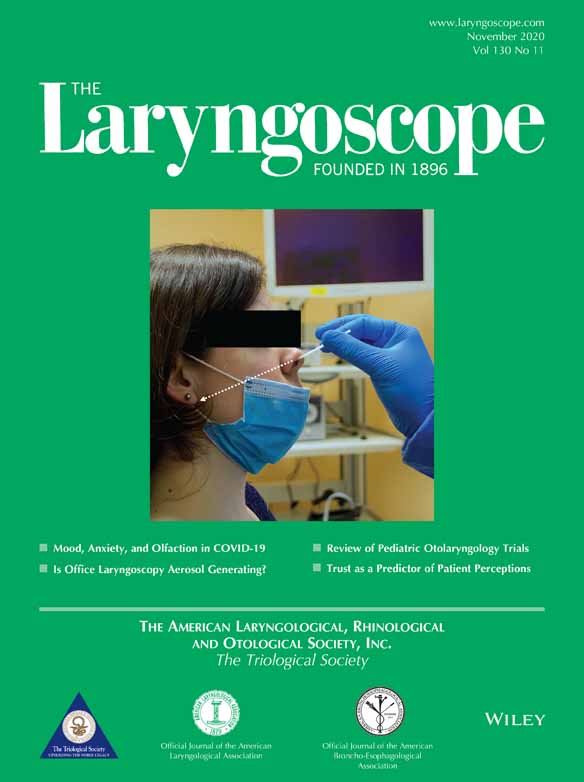Association of insurance type with time course of care in head and neck cancer management
Abstract
Objectives/Hypothesis
To determine differences in time course of care based on major insurance types for patients with head and neck squamous cell carcinoma (HNSCC).
Study Design
Retrospective cohort study.
Methods
Retrospective study of Health Maintenance Organization (HMO), Preferred Provider Organization (PPO), and Medicare patients with biopsy-proven diagnosis of HNSCC referred to an academic tertiary center for tumor resection and adjuvant therapy. In addition to patient demographic information and tumor characteristics, duration of chief complaint and the following time points were collected: biopsy by referring physician, first specialty surgeon clinic appointment, surgery, and adjuvant radiation start and stop dates.
Results
There was a statistically significant increase in time interval for HMO (n = 32) patients from chief complaint to biopsy (P = .003), biopsy to first specialty surgeon clinic appointment (P < .001), and surgery to start of adjuvant radiation (P < .001) compared to that of Medicare (n = 31) and PPO (n = 41) patients. Adjuvant radiation was initiated ≤6 weeks after surgery in 22% of HMO (mean duration of 59 ± 17 days), 48% of Medicare (44 ± 13 days), and 61% of PPO (41 ± 12 days) patients.
Conclusions
Compared to PPO and Medicare patients, HMO patients begin adjuvant radiation after surgery later and experience treatment delays in transitions of care between provider types and with referrals to specialists. Delaying radiation after 6 weeks of surgery is a known prognostic factor, with insurance type playing a possible role. Further investigation is required to identify insurance type as an independent risk factor of delayed access to care for HNSCC.
Level of Evidence
4 Laryngoscope, 130:E587–E592, 2020




